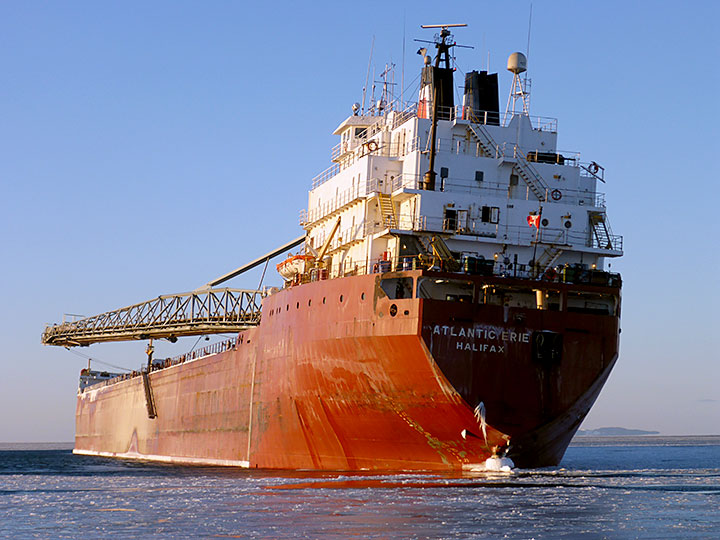Marine transportation safety investigation M15C0006
Table of contents
Grounding of the bulk carrier MV Atlantic Erie
Self-discharging bulk carrier Atlantic Erie
Chenal du Havre de la Grande Entrée
Îles de la Madeleine, Quebec
The occurrence
On 11 January 2015, the bulk carrier "Atlantic Erie", with 25 people on board, ran aground 1.1 nautical miles west of La Bluff, Île de Grande Entrée, Quebec. The vessel was partially off-loaded, ballast was removed and it was refloated with the assistance of tugs. The incident did not cause any injuries or pollution.
Media materials
Deployment notice
TSB deploys a team to the Magdalen Islands, Quebec, to investigate an incident involving the bulk carrier Atlantic Erie
Dartmouth, Nova Scotia, 12 January 2015 — The Transportation Safety Board of Canada (TSB) is deploying a team of investigators to the Magdalen Islands, Quebec, to investigate the grounding of the bulk carrier Atlantic Erie. The TSB will gather information and assess the occurrence.
Investigation information
Map showing the location of the occurrence
Investigator-in-charge
Shannon Pittman
Photos
Download high-resolution photos from the TSB Flickr page.
Class of investigation
This is a class 3 investigation. These investigations analyze a small number of safety issues, and may result in recommendations. Class 3 investigations are generally completed within 450 days. For more information, see the Policy on Occurrence Classification.
TSB investigation process
There are 3 phases to a TSB investigation
- Field phase: a team of investigators examines the occurrence site and wreckage, interviews witnesses and collects pertinent information.
- Examination and analysis phase: the TSB reviews pertinent records, tests components of the wreckage in the lab, determines the sequence of events and identifies safety deficiencies. When safety deficiencies are suspected or confirmed, the TSB advises the appropriate authority without waiting until publication of the final report.
- Report phase: a confidential draft report is approved by the Board and sent to persons and corporations who are directly concerned by the report. They then have the opportunity to dispute or correct information they believe to be incorrect. The Board considers all representations before approving the final report, which is subsequently released to the public.
For more information, see our Investigation process page.
The TSB is an independent agency that investigates air, marine, pipeline, and rail transportation occurrences. Its sole aim is the advancement of transportation safety. It is not the function of the Board to assign fault or determine civil or criminal liability.
